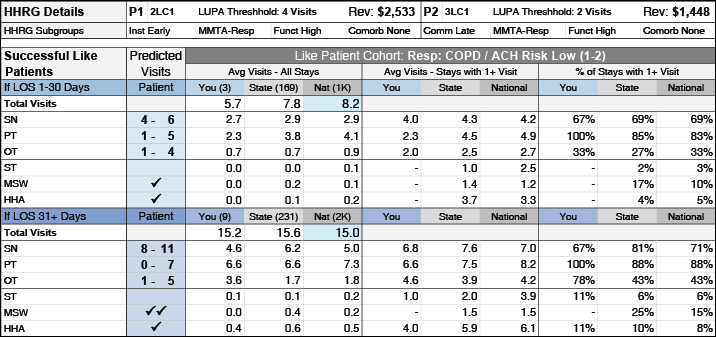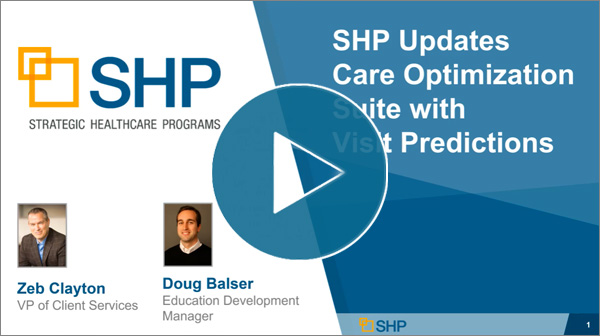

With more financial and quality controls, home health agencies put more focus on optimizing their visit plans. While clinical staffing remains a limited resource, providers are facing increased pressure to get the visit plan right.
SHP’s Care Optimization Suite equips home health organizations with the proper tools to create patient-specific care plans based on successful outcomes that address the different tier groups of hospitalization risk.
With the Care Optimization Suite, home health agencies can:
- Compare proposed Plans of Care (POC) with benchmarks of similar and successful patients
- Easily see which patient conditions need to be addressed in the POC
- Create patient-specific care plans using visit predictions
Game Changing Reports
The tools you need to create patient-specific care plans
SOC Patient Care Detail
Provides a color-coded overview of patient dependence and status, and presents visit patterns of successful like patients to help your team form visit plans.
Facilitates analysis of factors that drive visits within the first 60 days of SOC for individual patients, and presents actual visit patterns with patient success results to help refine future planning.

Looking for more details on how our Care Optimization reports can help you?
Fill out the form below to speak with us.
Visit Predictions
Backed by SHP’s proprietary data science-driven calculations, the Care Optimization Suite now features patient-specific visit predictions by discipline. By utilizing visit predictions insights, you can drive consistency in how you plan Medicare visits across your patient’s first 60 days.

Key Insights
Considers Patient Characteristics
Provides “best practices” based on specific patient characteristics
Risk of Hospitalization Tiers
Helps address patients with different risk of hospitalization tiers when developing care plans
Visit Contribution and Correlation
Provides insights on patient factors that contribute and correlate to higher and/or lower visits
Historical Reporting
Historical reporting allows for quality improvements based on specific patient attributes

